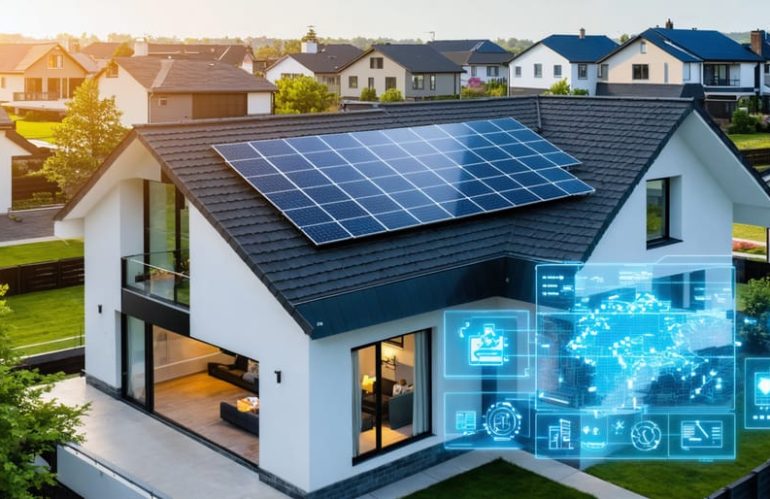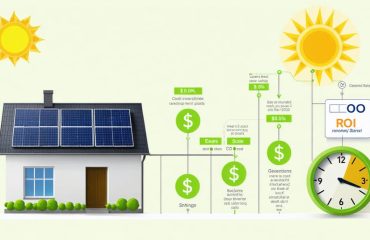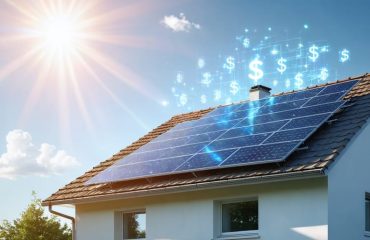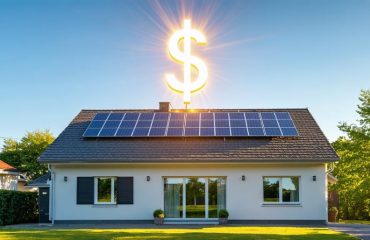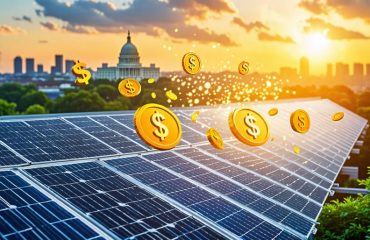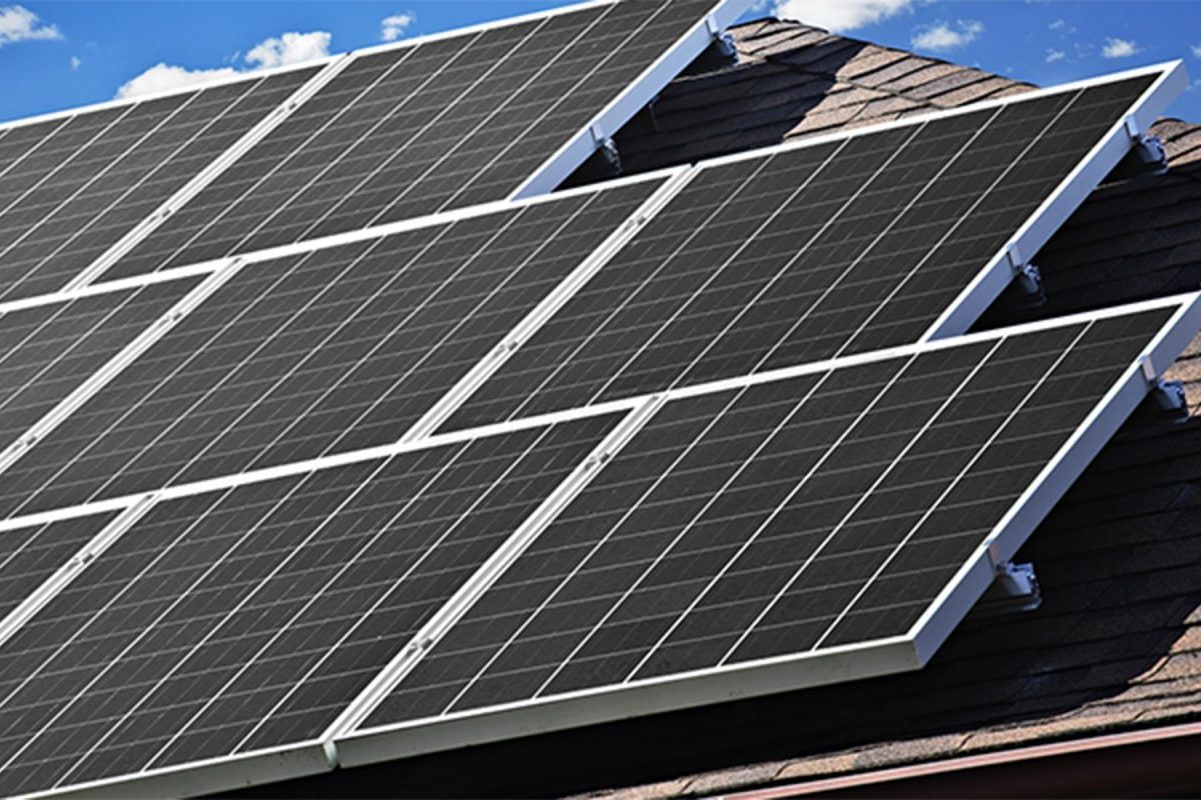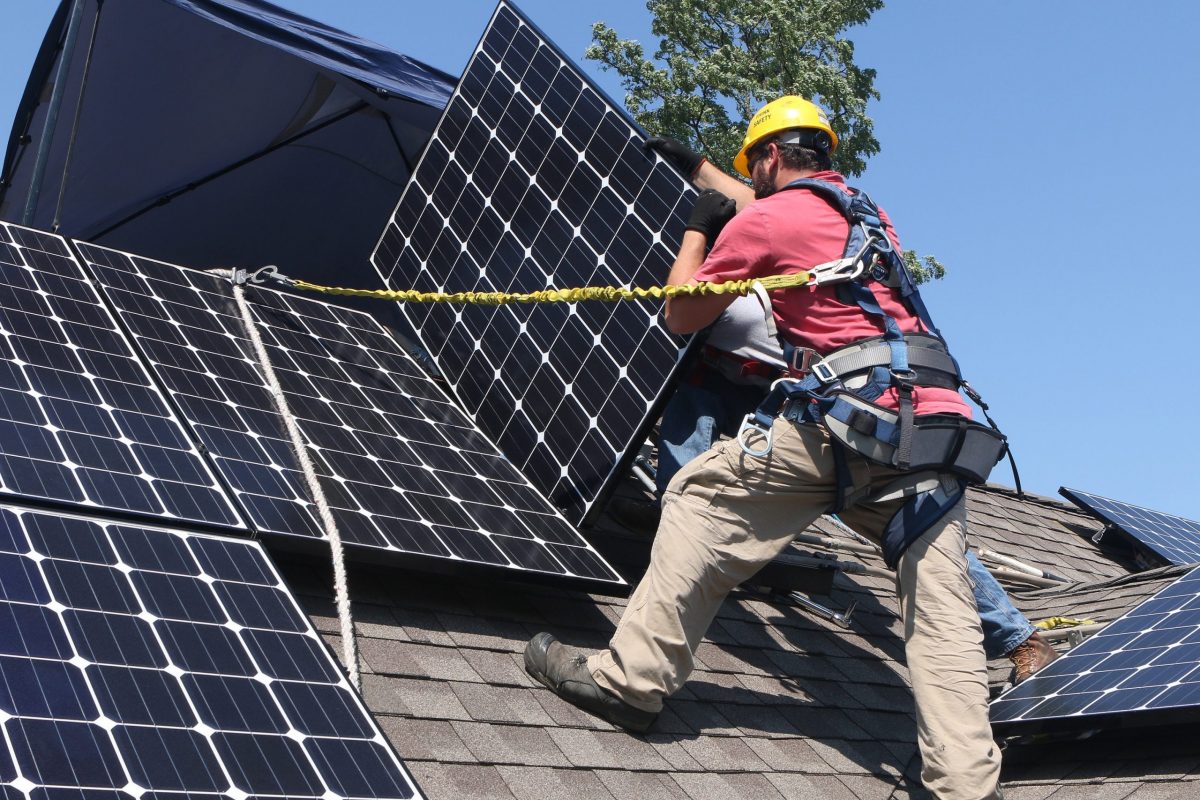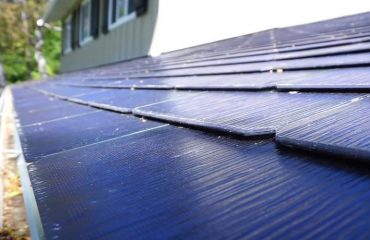Global investment in renewable energy surged to a record-breaking $500 billion in 2023, marking a pivotal shift in how we power our world. This unprecedented flow of capital isn’t just transforming our energy landscape—it’s creating tangible opportunities for homeowners to participate in the clean energy revolution while potentially securing their financial future.
As solar panel costs continue to plummet and energy storage technology advances, investors from individual households to major corporations are recognizing renewable energy as both an environmental imperative and a smart financial move. The acceleration of investment has created a positive feedback loop: increased funding drives technological improvements, which in turn attracts more investment and makes sustainable energy solutions more accessible to everyday consumers.
For homeowners considering solar installation or green energy investments, this global trend translates into lower equipment costs, improved technology reliability, and expanded financing options. The surge in investment has also sparked innovation in energy storage solutions and smart grid technologies, making renewable energy systems more efficient and practical for residential use.
This robust global investment landscape signals a clear message: renewable energy isn’t just the future—it’s a present reality reshaping our energy economy and creating opportunities for sustainable, cost-effective power generation at every scale.
The Global Solar Investment Landscape
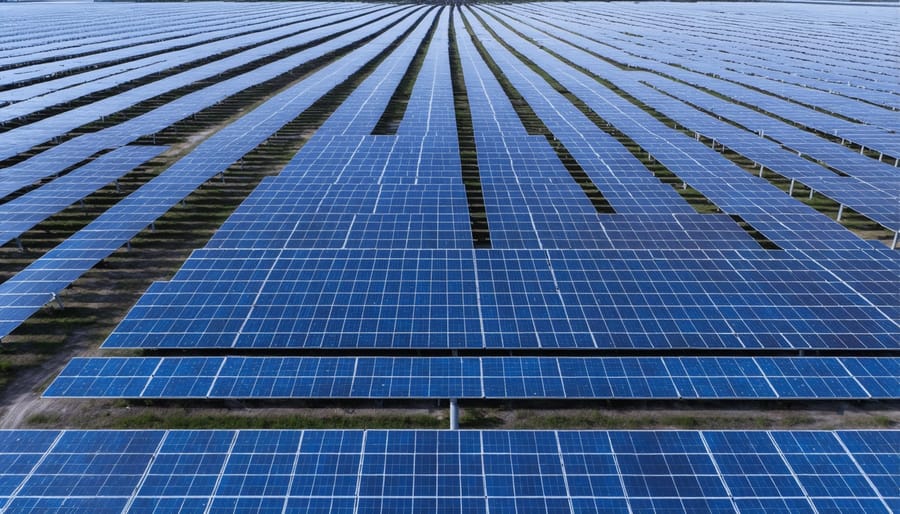
Record-Breaking Investment Numbers
Global investment in renewable energy reached unprecedented heights in 2023, with a remarkable $1.7 trillion poured into clean energy technologies. Solar power emerged as the frontrunner, attracting over $380 billion in investments worldwide – a clear signal of its growing dominance in the energy sector.
This surge represents more than just numbers on a spreadsheet. For the first time in history, renewable energy investments exceeded those in fossil fuels, marking a pivotal shift in how we power our world. China leads the charge, investing nearly $550 billion in renewable technologies, while Europe and North America have also significantly increased their commitments.
What’s particularly encouraging for homeowners is that residential solar installations account for a substantial portion of this growth. The average cost of solar panels has dropped by more than 60% over the past decade, making home solar systems increasingly accessible. This price reduction, coupled with rising energy costs, has created a perfect storm for solar adoption.
Investment analysts project this upward trend to continue, with global renewable energy investments expected to surpass $2 trillion annually by 2025. This sustained growth means homeowners can expect further improvements in solar technology, continued cost reductions, and more efficient installation options in the coming years.
Major Market Players and Their Impact
Several key players are shaping the future of renewable energy investment worldwide. China continues to lead the pack, investing over $100 billion annually in renewable projects, with a particular focus on solar manufacturing and installation. The United States follows closely behind, driven by ambitious climate goals and tax incentives that make solar more accessible for homeowners and businesses alike.
European nations, particularly Germany and Spain, have maintained their strong commitment to renewable energy, creating stable markets that attract both domestic and international investors. India has emerged as a rapidly growing market, combining government support with increasing private sector participation to accelerate its renewable energy transition.
On the corporate front, major technology companies like Google, Apple, and Amazon have made substantial commitments to renewable energy, often funding large-scale solar and wind projects. Traditional energy companies, including BP and Shell, are also pivoting towards renewables, allocating significant portions of their investment budgets to clean energy projects.
Financial institutions play a crucial role too. Banks like Goldman Sachs and JPMorgan Chase have pledged hundreds of billions in renewable energy financing, while investment firms like BlackRock are increasingly focusing on sustainable energy portfolios. This growing financial support makes renewable energy more accessible and affordable for everyday consumers, creating a positive cycle of adoption and investment.
How Global Investment Benefits Homeowners
Falling Installation Costs
Global investments in renewable energy have dramatically driven down solar panel installation costs, making clean energy more accessible than ever before. Over the past decade, the cost of installing solar panels has dropped by more than 70%, thanks to improved manufacturing processes, technological advancements, and increased competition among suppliers.
This remarkable price reduction stems from major investments by countries like China, Germany, and the United States, which have poured billions into solar technology development and production scaling. As manufacturers achieve greater economies of scale, they can produce panels more efficiently and pass these savings on to consumers.
The falling costs aren’t limited to just the panels themselves. Installation equipment, inverters, and mounting systems have all become more affordable as the industry matures. Additionally, installation companies have streamlined their processes, reducing labor costs while maintaining high-quality standards.
For homeowners, this translates to significantly lower upfront costs and faster return on investment. What once might have taken 10-15 years to recoup in energy savings can now be achieved in 5-7 years in many regions. The combination of lower equipment costs and improved installation efficiency means that more households can now afford to switch to solar power.
Looking ahead, experts predict that installation costs will continue to decrease as global investment in renewable energy grows. New technologies, such as more efficient panels and innovative mounting systems, are being developed with the support of international funding, promising even more affordable solar solutions for homeowners in the coming years.
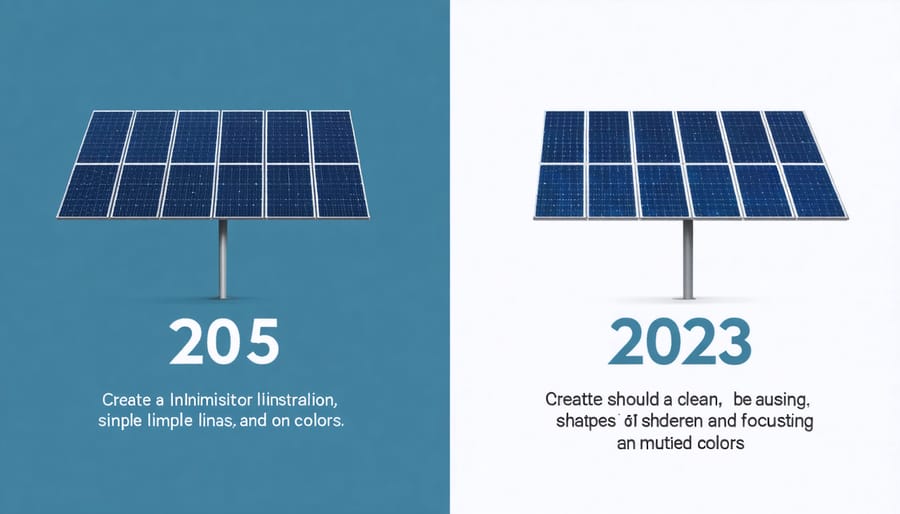
Technology Improvements
Global investment in renewable energy has sparked remarkable improvements in solar technology, making it more efficient and affordable than ever before. Recent advances in photovoltaic cell design have pushed solar panel efficiency above 20%, with some premium panels reaching up to 23%. This means homeowners can now generate more power from smaller roof areas, maximizing their energy production potential.
Manufacturing improvements have also led to significant cost reductions, with solar panel prices dropping by more than 80% over the past decade. These savings directly benefit homeowners, making solar installations more accessible and reducing the time needed to recoup their investment.
Innovation isn’t limited to just the panels themselves. New inverter technologies are making systems smarter and more reliable, while improved energy storage solutions are extending the benefits of solar power well into the evening hours. Battery technology has evolved rapidly, with newer models offering greater capacity and longer lifespans at lower prices.
The surge in global investment has also accelerated research into next-generation solar technologies. Bifacial panels, which can capture sunlight from both sides, are becoming more common, potentially increasing energy output by up to 30% in certain installations. Meanwhile, perovskite solar cells show promise for even higher efficiencies at lower costs in the coming years.
These technological improvements have made solar energy more dependable and cost-effective for homeowners. As global investment continues to drive innovation, we can expect to see even more advanced solutions that make renewable energy an increasingly attractive option for sustainable living.
Smart Timing for Solar Investment
Market Momentum
The global renewable energy market is experiencing unprecedented momentum, driven by a perfect storm of favorable conditions. Investment in clean energy technologies reached a record-breaking $1.3 trillion in 2022, with solar power leading the charge. This surge isn’t just happening in developed nations – emerging markets are rapidly embracing renewable energy solutions, creating a robust global supply chain that benefits homeowners worldwide through lower equipment costs.
Government incentives and policies are playing a crucial role in this expansion. The U.S. Inflation Reduction Act, for instance, offers generous tax credits that can cover up to 30% of solar installation costs. Similar programs are being implemented across Europe and Asia, making long-term solar investment benefits more accessible than ever before.
Market analysts project this growth trajectory to continue, with solar installation costs expected to decrease by an additional 15-20% over the next five years. This declining cost trend, combined with rising electricity prices, creates an increasingly attractive value proposition for homeowners. Major corporations are also making substantial commitments to renewable energy, further stabilizing the market and ensuring continued technological improvements.
For homeowners considering solar installation, this market momentum translates into better technology, more reliable systems, and more competitive pricing options. The growing ecosystem of installers and service providers also means better customer support and maintenance services.
Future Price Projections
As global investment in renewable energy continues to surge, experts predict a promising future for solar panel costs and returns. Industry analysts forecast that solar panel prices will decrease by an additional 20-30% by 2025, making residential solar installations even more accessible for homeowners. This trend is driven by technological improvements, manufacturing efficiencies, and increased competition among suppliers.
Investment returns for solar installations are expected to improve significantly over the next decade. While current payback periods typically range from 5-8 years, projections suggest these could shrink to 3-5 years by 2030. This improvement stems from a combination of lower installation costs and rising traditional energy prices.
The International Renewable Energy Agency (IRENA) predicts that the global average cost of utility-scale solar installations will fall below $0.02 per kilowatt-hour by 2030, making solar the most cost-effective energy source in most regions. For homeowners, this translates to even more attractive savings on their energy bills.
Battery storage costs are also expected to decline by up to 40% by 2025, making solar-plus-storage systems increasingly viable for residential use. This development will allow more homeowners to maximize their solar investment by storing excess energy for nighttime use or emergency backup.
As governments worldwide strengthen their commitment to renewable energy, additional incentives and support programs are likely to emerge, further enhancing the financial appeal of residential solar investments.
Making Your Solar Investment Decision
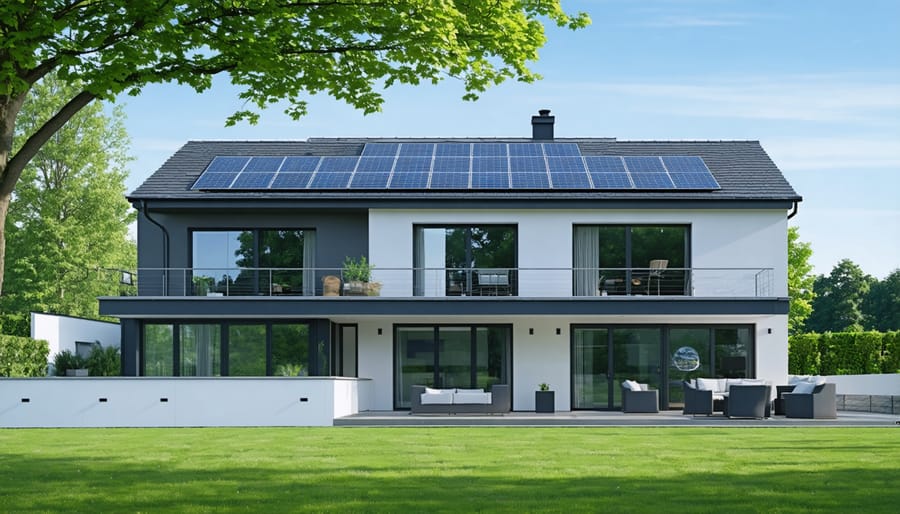
Evaluating Long-term Returns
When evaluating long-term returns on solar investments, it’s essential to consider multiple factors that contribute to your overall financial benefits. To calculate your solar investment returns, start by determining your current electricity costs and average annual consumption.
The primary components of your return calculation should include:
– Initial installation costs (minus tax incentives and rebates)
– Projected energy savings over 25+ years
– Potential income from excess energy production
– Maintenance costs (typically minimal)
– Increase in property value
A typical solar installation can pay for itself within 5-10 years, depending on your location and energy usage patterns. After this break-even point, the system continues generating free electricity for many years, potentially saving tens of thousands of dollars over its lifetime.
Consider that electricity rates historically increase by about 2-3% annually, making your solar savings grow over time. Additionally, many regions offer net metering programs, allowing you to earn credits for excess energy production. Modern solar panels also come with 25-year warranties and can last even longer, ensuring decades of reliable energy production and financial returns.
Remember to factor in local solar incentives and federal tax credits, which can significantly reduce your initial investment and improve your overall returns.
Taking Advantage of Current Incentives
Now is an excellent time for homeowners to invest in renewable energy, thanks to numerous government incentives and programs. The federal Investment Tax Credit (ITC) remains one of the most significant solar tax incentives, allowing homeowners to deduct 30% of their solar installation costs from their federal taxes through 2032.
Many states offer additional benefits, including property tax exemptions, sales tax breaks, and performance-based incentives. Some utility companies provide rebates or net metering programs, allowing homeowners to sell excess power back to the grid. Local governments may also offer grants or low-interest loans for renewable energy projects.
The Inflation Reduction Act of 2022 has introduced new incentives for energy-efficient home improvements, including battery storage systems and electric vehicle charging stations when installed alongside solar panels. These complementary technologies can maximize your renewable energy investment’s value.
To take full advantage of these opportunities, homeowners should:
– Research available incentives in their area
– Consult with certified solar installers
– Plan installations around tax season
– Keep detailed records of all expenses
– Submit applications within required deadlines
Remember that incentive programs often change yearly, so acting while these favorable conditions exist can lead to significant savings on your renewable energy investment.
As global investment in renewable energy continues to surge, particularly in solar power, homeowners have a unique opportunity to be part of this transformative movement. The declining costs of solar installations, coupled with improving technology and generous incentives, make this an ideal time to consider solar energy for your home. Not only will you potentially reduce your monthly energy bills and increase your property value, but you’ll also contribute to a more sustainable future. By joining millions of homeowners worldwide who have already embraced solar power, you can secure both environmental and financial benefits for years to come. Take the first step today by researching local solar installers, exploring available incentives, and calculating your potential savings – your future self will thank you for making this smart, sustainable investment.

